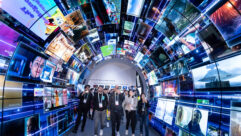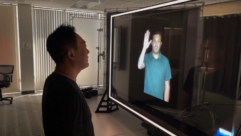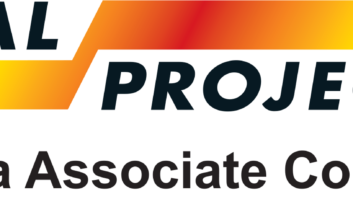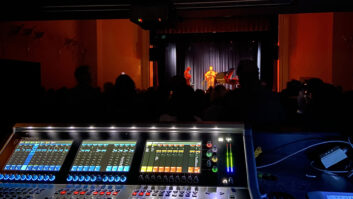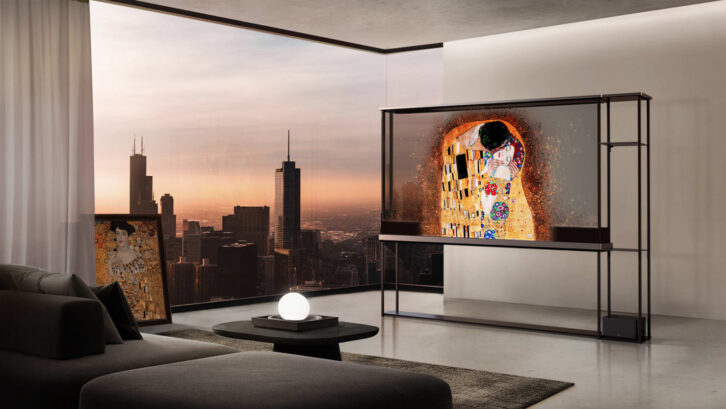
CES 2024 has come and gone, and though there was the usual wide breadth of different cutting-edge technologies on display, there was one trend that was hard to ignore: transparent displays. Here’s a look at what was crystal-clear at CES 2024:
LG has been developing transparent OLED panels for quite some time, but the debut of the OLED Signature T TV is the first ready-for-home product to incorporate the technology. Utilizing a transparent 4K OLED panel backed by a layer of contrast film, the 77″ TV’s transparency can be manually adjusted from opaque to clear at will, while a Zero Connect box keeps the whole display completely wireless. The OLED Signature T runs a new version of LG’s webOS interface, and inlcudes a T-Bar display at the bottom of the screen that can display local weather or news alerts while the screen remains transparent. The TV also has an “always on” feature that allows for the showcasing of digital art or photos while the rest of the display “practically invisible when turned off” for “a sense of openness,” according to LG. While LG has confirmed that the OLED Signature T will be available for purchase, a retail date or price has not been provided yet. The company says it is still deciding on whether or not the TV will be available on its own, or only bundled with the decorative stand it was displayed with at CES.
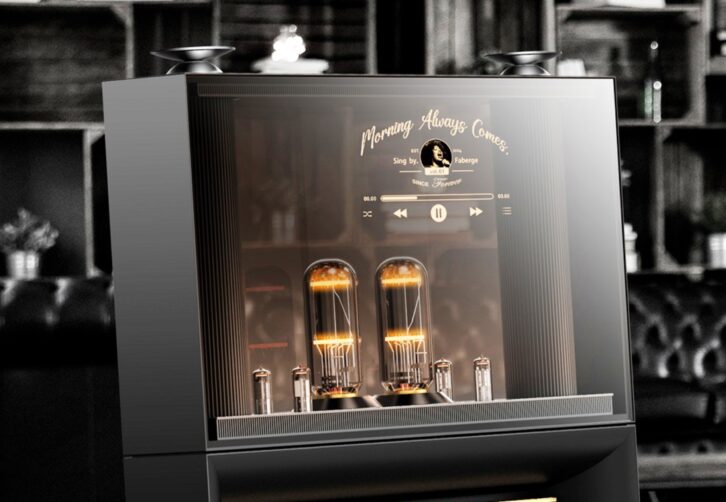 Making buzz even before its CES debut, the LG DukeBox is a unique take on melding tried-and-true audio with the latest advances in display technology. The prototype speaker/display combo continues LG’s recent trend of delivering consumer AV with an intentional design philosophy. Developed by LG Labs (LG’s marketing platform for experimental products), the DukeBox places old-school vacuum tubes into a modern audio system, then covers the whole thing with a transparent OLED display. It consists of two front-facing speakers at the bottom of the device and a 360- degree immersive speaker at the top. To marry the vintage aesthetic of the vacuum tubes with a more futuristic look, the tubes are encased behind a transparent OLED screen. LG says the transparency of the screen is adjustable to give viewers a peek at the insides or crank up the opacity to allow users to enjoy the ambiance of a crackling fireplace or even watch movies. No availability or pricing has been made public as yet.
Making buzz even before its CES debut, the LG DukeBox is a unique take on melding tried-and-true audio with the latest advances in display technology. The prototype speaker/display combo continues LG’s recent trend of delivering consumer AV with an intentional design philosophy. Developed by LG Labs (LG’s marketing platform for experimental products), the DukeBox places old-school vacuum tubes into a modern audio system, then covers the whole thing with a transparent OLED display. It consists of two front-facing speakers at the bottom of the device and a 360- degree immersive speaker at the top. To marry the vintage aesthetic of the vacuum tubes with a more futuristic look, the tubes are encased behind a transparent OLED screen. LG says the transparency of the screen is adjustable to give viewers a peek at the insides or crank up the opacity to allow users to enjoy the ambiance of a crackling fireplace or even watch movies. No availability or pricing has been made public as yet.
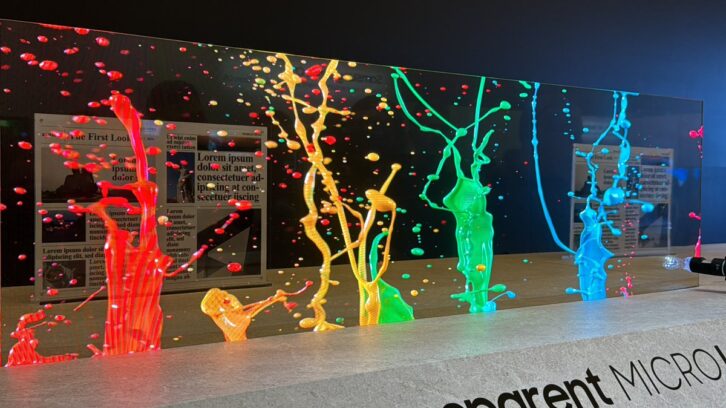 Samsung began this year’s CES with a bang by revealing the world’s first transparent microLED display. More accurately, the company was actually showcasing three different models of its new transparent microLED technology. To highlight the new display’s features against transparent display technology currently on the market, Samsung positioned the new microLED next to a transparent OLED display and a transparent LCD display. According to Samsung, microLED’s higher brightness levels compared to OLED means that their new transparent panels are less affected by ambient light and offer a sharper image. The display itself also stands apart from the rest, with its sharp corners and complete lack of bezels or frame. No price point or release date for this technology has materialized yet, but given the high price of current microLED displays, it should be a while before we see transparent microLED pop up in consumer applications.
Samsung began this year’s CES with a bang by revealing the world’s first transparent microLED display. More accurately, the company was actually showcasing three different models of its new transparent microLED technology. To highlight the new display’s features against transparent display technology currently on the market, Samsung positioned the new microLED next to a transparent OLED display and a transparent LCD display. According to Samsung, microLED’s higher brightness levels compared to OLED means that their new transparent panels are less affected by ambient light and offer a sharper image. The display itself also stands apart from the rest, with its sharp corners and complete lack of bezels or frame. No price point or release date for this technology has materialized yet, but given the high price of current microLED displays, it should be a while before we see transparent microLED pop up in consumer applications.
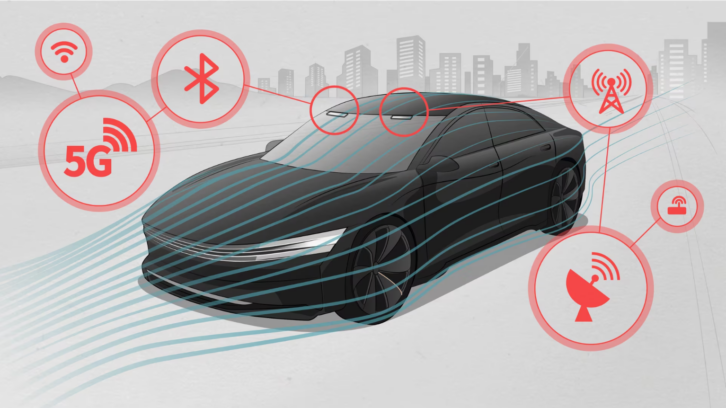 Moving on to the automotive industry, LG has broken new ground with a unique approach to the modern car antenna. Designed in a collaboration with French glass manufacturer Saint-Gobain Sekurit, LG says the transparent antenna will be compatible with a range of glass types and vehicle models. Designed to be integrated into a car’s windshield or glass sunroof, the technology that makes up “film type” antenna has over 80 patents from LG. The strips of film that make up the transparent antenna can be affixed onto a windshield’s glass surface or can even be built into the glass itself. LG claims the transparent antenna offers enhanced connectivity and supports 5G, GNSS (Global Navigation Satellite System) and Wi-Fi. “We’re pleased to unveil our smart glass featuring LG’s transparent antenna technology.” said Thibaut Heitz, Innovation and R&D Director of SaintGobain Sekurit. “ Our common objective aim is to provide an enriched and unique in-vehicle environment, bringing the future of mobility to fruition.”
Moving on to the automotive industry, LG has broken new ground with a unique approach to the modern car antenna. Designed in a collaboration with French glass manufacturer Saint-Gobain Sekurit, LG says the transparent antenna will be compatible with a range of glass types and vehicle models. Designed to be integrated into a car’s windshield or glass sunroof, the technology that makes up “film type” antenna has over 80 patents from LG. The strips of film that make up the transparent antenna can be affixed onto a windshield’s glass surface or can even be built into the glass itself. LG claims the transparent antenna offers enhanced connectivity and supports 5G, GNSS (Global Navigation Satellite System) and Wi-Fi. “We’re pleased to unveil our smart glass featuring LG’s transparent antenna technology.” said Thibaut Heitz, Innovation and R&D Director of SaintGobain Sekurit. “ Our common objective aim is to provide an enriched and unique in-vehicle environment, bringing the future of mobility to fruition.”
- Veeo LG Holodeck
 A partnership between immersive camera company Veeo and LG leverages transparent OLED tech and will see the release of three touch-enabled conferencing displays. The displays will be released this summer under the name HoloDeck, with the “M” suffix denoting the presence of infrared sensors for touchscreen recognition, and the “T” suffix denoting the presence of gesture recognition.
A partnership between immersive camera company Veeo and LG leverages transparent OLED tech and will see the release of three touch-enabled conferencing displays. The displays will be released this summer under the name HoloDeck, with the “M” suffix denoting the presence of infrared sensors for touchscreen recognition, and the “T” suffix denoting the presence of gesture recognition.



